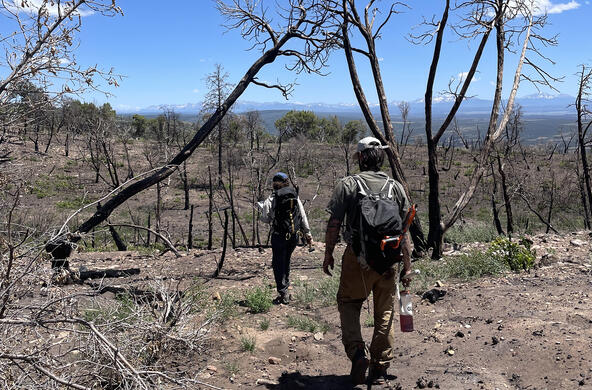When it comes to emerging diseases, the Zika virus is just the tip of the iceberg.
New research has revealed several hot spots around the world where diseases are most likely to move from wildlife—wild mammals, specifically—into the human population. The paper, published Tuesday in the journal Trends in Parasitology, looks beyond insect-borne diseases, such as Zika, to diseases that can be transmitted by humans by 27 groups of mammal species, including carnivores, rodents, and primates. Even camels made the list.
According to lead author Barbara Han, a disease ecologist with the Cary Institute of Ecosystem Studies, the study has revealed that some of these animal groups deserve more attention than they're getting. Carnivores are a prime example, she said: Almost half of carnivore species carry one or more illnesses that can be passed on to humans—collectively known as zoonotic diseases—including red foxes, which carry 40 unique diseases, and raccoons, which carry 26.
"The emergence of Zika virus underscores a problem that we need to confront as a society," says Han, who has studied Ebola and other epidemics, and is now working on ways to predict zoonotic disease outbreaks.
The worst locations for such outbreaks, the new study found, are not in biodiverse regions such as the tropics but in highly populated areas such as the United States, Europe, and Southeast Asia.
"Zika and Ebola have shown us that emergency preparedness is indeed critical, but it would be myopic not to explore more preemptive—and relatively speaking, much cheaper—approaches to quantifying and mitigating disease risk," Han said.
"This could be as simple as being aware of where zoonotic potential is greatest and being mindful of that zoonotic potential prior to bulldozing or otherwise changing the landscape."
"The rodents, of course, are a group to keep watching," she added, pointing to the Norway rat, which has become an invasive species around the world. "Not only are there more rodent species than any other group, but they also carry more diseases than any other group except carnivores."
Outside the species themselves, the study found that the reasons for zoonotic transmission are complex and include the conditions in which humans live. Residents of poorer urban areas could be at higher risk, for example, because even though these areas may be low in biodiversity, populations of rodents and other species carrying zoonotic diseases can be high. That allows diseases to move rapidly across an entire animal population and then cross over to humans.
"There are definitely systems where a lack of biodiversity could enable disease to spread more quickly," Han said.
Climate change could also be a contributing factor to the spread of zoonotic diseases. Han hopes that other researchers will follow up on this research to address "the implications of climate warming for the zoonotic hosts and diseases in the North Temperate Zone."
Han and her coauthors compiled the study by crunching the data from hundreds of previously published host-pathogen studies and applying those findings to maps of the ranges for each mammal species. The process, she said, "took forever and a couple of wrist braces."
The resulting maps of emerging pathogen threats are striking. But Princeton University professor Andrew Dobson, who was not involved with the study, worried that it may not add much to what we already know about wildlife diseases, because much of the data may have come from areas that are highly studied, leaving other potential outbreak sites unrevealed.
Of the approximately 2,000 published papers on the topic of zoonotic diseases, said Dobson, only about 500 contain original research, while the rest draw their conclusions from that smaller subset.
Han acknowledged that more work needs to be done to understand these emerging diseases. But that requires funding, something that is uncertain even for a known threat: Congress has yet to approve a February request from the Obama administration for $1.8 billion to combat Zika.
"We're all watching this trend of basic science receiving dwindling support and sometimes even ridicule from governments," Han said. She credited government-funded research for its contributions to her study. "Taxpayers have contributed to these breakthroughs, and I hope our governments will not lose sight of basic science as an incredibly worthy and necessary investment."






